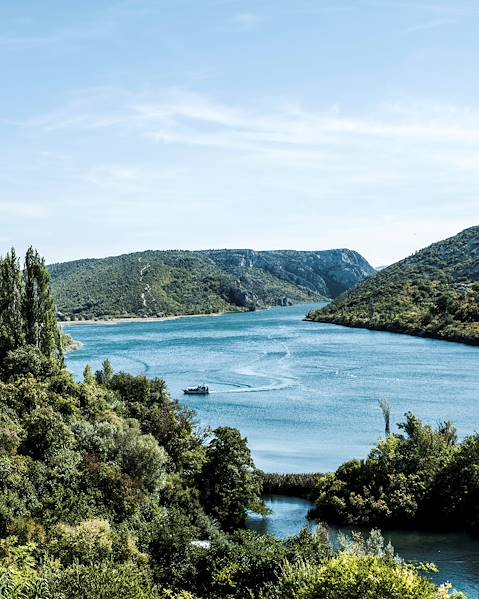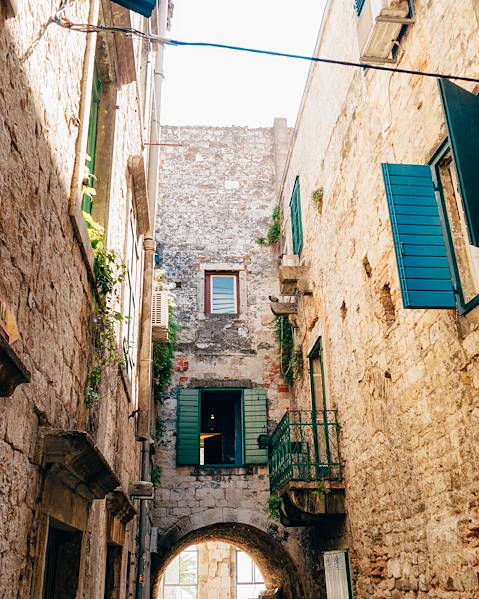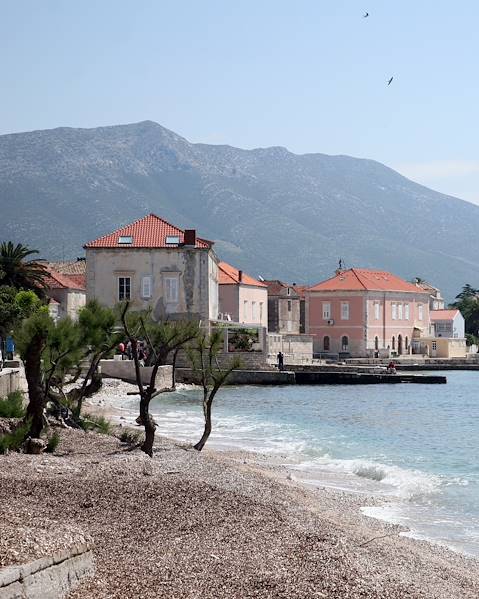Population
4,120,328 (2019)
Official language
Croatian - a Slavic language, which is written with the Latin alphabet
Language spoken
Almost 90% of people living in Croatia speak Croatian but other languages in the country include Serbian at around 4.5% of the population, then a smattering of Bosnian, Italian, Hungarian and Albanian. The majority of international tourists come from Germany and the UK so you may also hear a lot of English and German spoken here from tourists and guides too, and many of the younger generation can speak a good level of English. In the once-Italian Istria Region, it’s not uncommon to hear Italian and Italian dialects spoken.
People
The population of the Croatian state has changed considerably over the years due to its political unrest, in particular after the War of Independence which was fought 1991 to 1995. For example, in 1991 before the war began, Croats made up 78% of the population and Serbs made up 12.3%, while in 2001 this changed dramatically to 89.6% of the population being Croats and Serbs being just 4.5%.
Religion
There is a strong religious identity in Croatia because Catholicism is closely linked to the affirmation of the Croatian national identity, with 86% of the population identifying as Catholics. Other Christian denominations include Orthodox (which comes mostly from the Serbian population) with 4.4% of the population, and Protestants (mostly from those of Hungarian background) at a small 0.3% of the population. In addition, the Muslim population make up 1.3%, while almost 4% don’t identify as belonging to any religion. However, there is a separation of church and state in Croatia and there is religious freedom.
National Holiday
25 June: Anniversary of the declaration of independence in 1991.
Holiday Schedule
- January 1: New Year's Day.
- January 6: Epiphany.
- February: carnivals in several cities.
- March-April: Easter.
- May 1: Labor Day.
- May-June: Corpus Christi.
- 22 June: Day of Antifascist.
- 25 June: National Day.
- August 5: National day of remembrance.
- August 15: Assumption.
- October 8: Independence Day.
- November 1: All Saints Day.
- December 25: Christmas.
History
Croatia has actually been inhabited since the prehistoric period, with Neanderthal (Middle Paleolithic) and Vinca (Neolithic). It has seen numerous settlers throughout the Bronze and Iron ages who have all left their mark, including the Celtic La Tene (Second Iron Age), Illyrians (an Indo-European culture from the Bronze Age). Much later, the region was settled by Liburnians who lived in a region most-recognisable as the Adriatic Coast of modern-day Croatia, while the first Greek colonies were established on the islands of Vis and Hvar. In 168 BC, it was the Romans’ turn to take over and although there were numerous territory wars, most of the country became completely Romanised and Latin-speaking by the fourth century AD. With the fall of the Western Roman Empire in 467 AD, the region was taken over and became a Byzantium Empire for centuries until it was appointed a king and becamethe Kingdom of Croatia in 925 AD. This continues until 1102 AD when Croatia combined forces with Hungary and the Republic of Venice. Over the next 425 years, the country underwent many political changes and was ruled by a parliament (Sabor) with an appointed viceroy (Ban) on behalf of the Hungarian king.
The following period that spanned from the 15th century up to the 17th century saw Croatia struggle with the Ottoman Empire, followed by a period of relative peace under the rule of Maria Theresa of Austria who was sovereign of Austria, Hungary, Croatia, Bohemia, Transylvania, Mantua, Milan, Lodomeria and Galicia, the Austrian Netherlands, and Parma. In the 20th century, Croatia was incorporated as part of Yugoslavia but Croatian nationalism grew - especially after the devastation of World War II - culminating in the War of Independence in 1991.
Policy
The president is elected every five years and their position is head of state and head of the armed forces. They appoint the prime minister - who is head of the political party with parliamentary majority - and the prime minister is responsible for the implementation of national policy. A Constitutional Court decides on the constitutionality of laws, while the Supreme Court is the cornerstone of the judicial building.
Famous Croatians
- The Roman Emperor from 284 to 305 AD was Diocletian and in the city of Split on Croatia’s Adriatic Coast, there is an impressive ruin called Diocletian’s Palace.
- Janica Kostelic (born 1982) is an exceptional skier with four Olympic gold medals (2002 and 2006: Slalom, Giant Slalom, Combined), five titles of world champion (2003 and 2005: Slalom, Combined, Downhill).
- Aloysius Stepinac (1898-1960) was Archbishop of Zagreb from 1937 to 1960, who was sentenced under Tito for collaboration with the Ustasha regime and later rehabilitated and beatified by John Paul II in 1998. His struggle is emblematic of the country’s struggle with Croatian Catholicism and national identity in this century.
Etiquette
Tipping is at your discretion and is generally not expected, but in some upmarket restaurants and bars there will often be an optional service charge added to the bill.
For guides, you might want to give a small tip, or for porters at hotels, but no tip is expected
Shopping
There are a number of lovely markets for shopping in Split and Rijeka where you can purchase locally-made wares, from hand-carved wooden ornaments and toys to clothes and bags or food and wine. In 2009 lacemaking in Croatia was designated by UNESCO as an example of Intangible Cultural Heritage of Humanity. On the island of Hvar, farmers still make bobbin lace in intricate patterns, and you can shop on Pag Island to find old fashioned doilies in traditional styles. In Samobor, west of Zagreb, you can find world-renowned crystal, and across the country you can buy some delicious honey, lavender, oils and other foodstuffs produced by local farmers.
Food
Croatia is at the crossroads of a number of influences and this is reflected in its cuisine. The Habsburg Empire brought in traditionally Germanic dishes such as schnitzel, sausages and strudel; then you have Eastern European dishes including goulash and kebabs, and flavours such as paprika; then there’s the Italian influence which is seen in polenta, gnocchi and pasta. The southern Adriatic Coast highlights Mediterranean flavours and ingredients with excellent seafood consistently on the menu, especially oysters, scampi, prstaci (date mussels) and Dalmatian brodet (various types of fish stewed with rice). Soups are very popular, too, and you’ll find a lot of meat available, as well as fresh, seasonal vegetables and lots of olive oil and garlic.
Drink
There are a decent amount of wineries in Croatia - more than you might think - and there are some unusual wines on offer, including red, white and rose. On the Adriatic coast, they make robust reds including Postup, Dingac and Teran, whereas further east you’ll find more white wines such as Kutjevacka Graševina and Rajinski Rizling. For an aperitif or taste of local flavours, opt for a tipple of brandy (rakija), whether you prefer plum (sljivovica) or grape (loza).

















